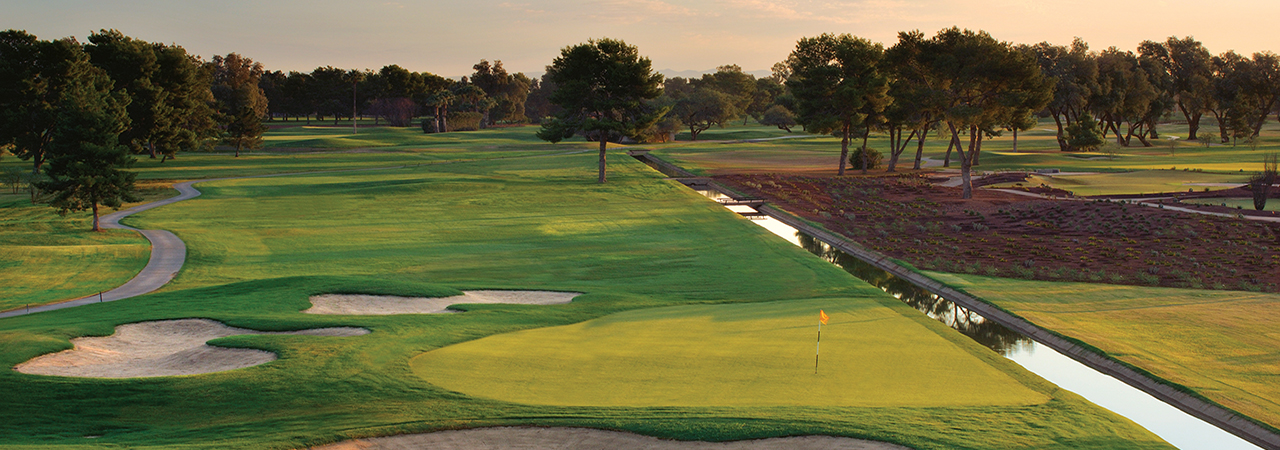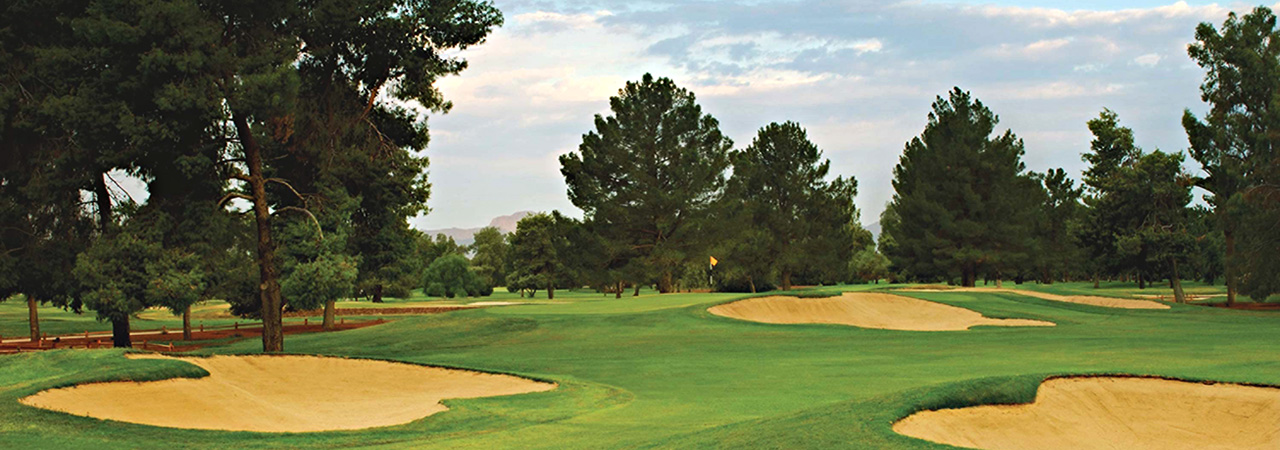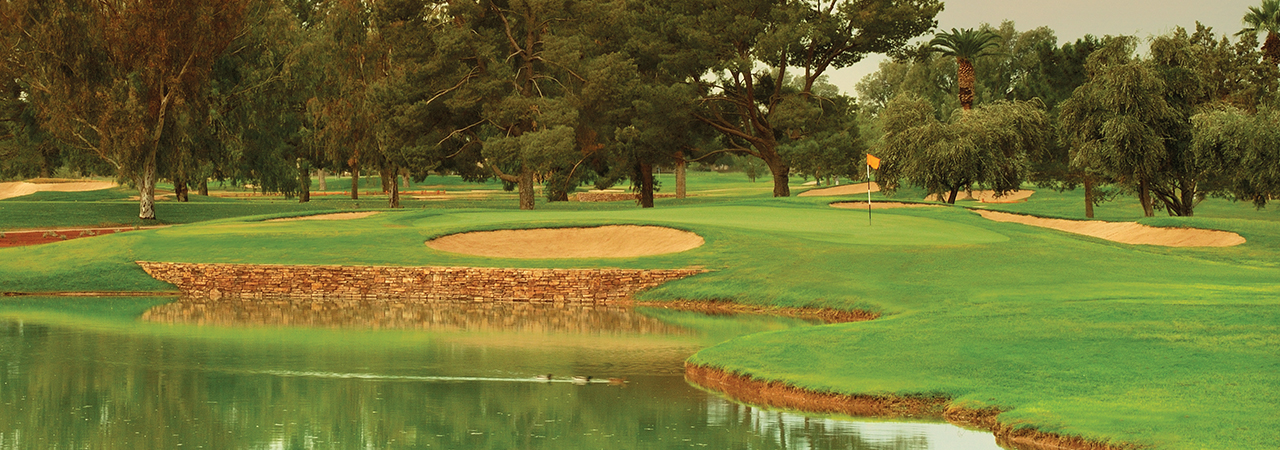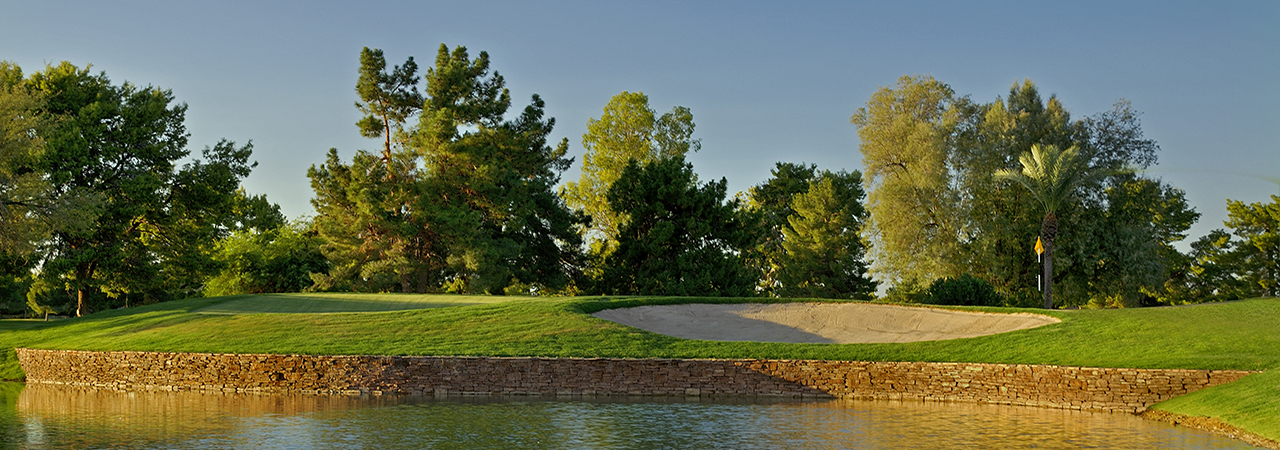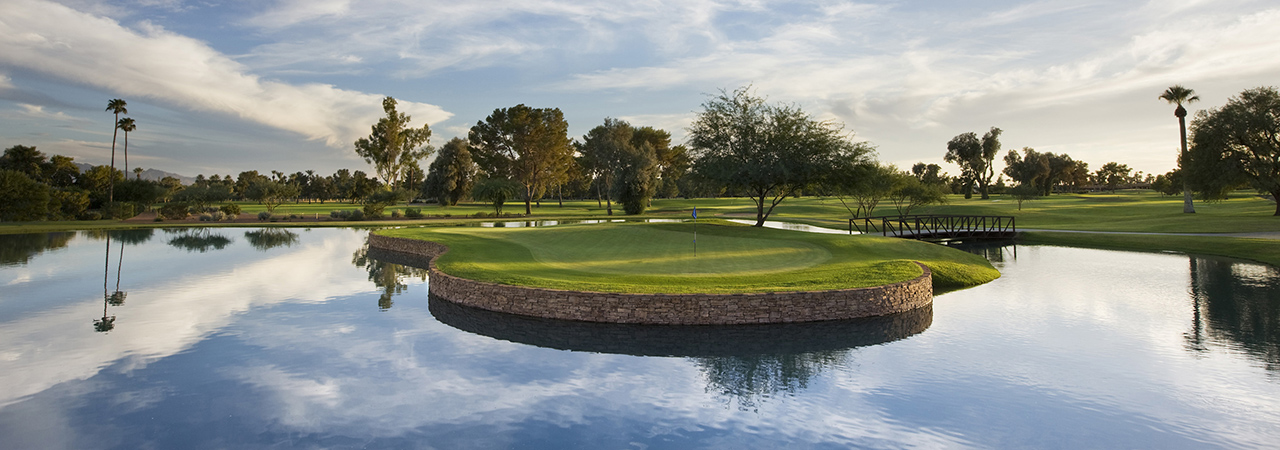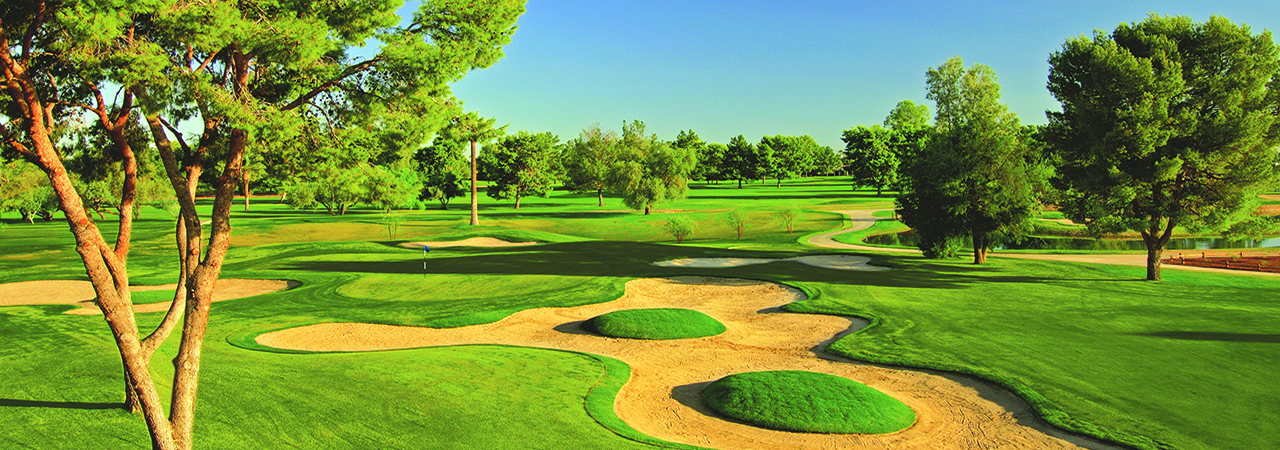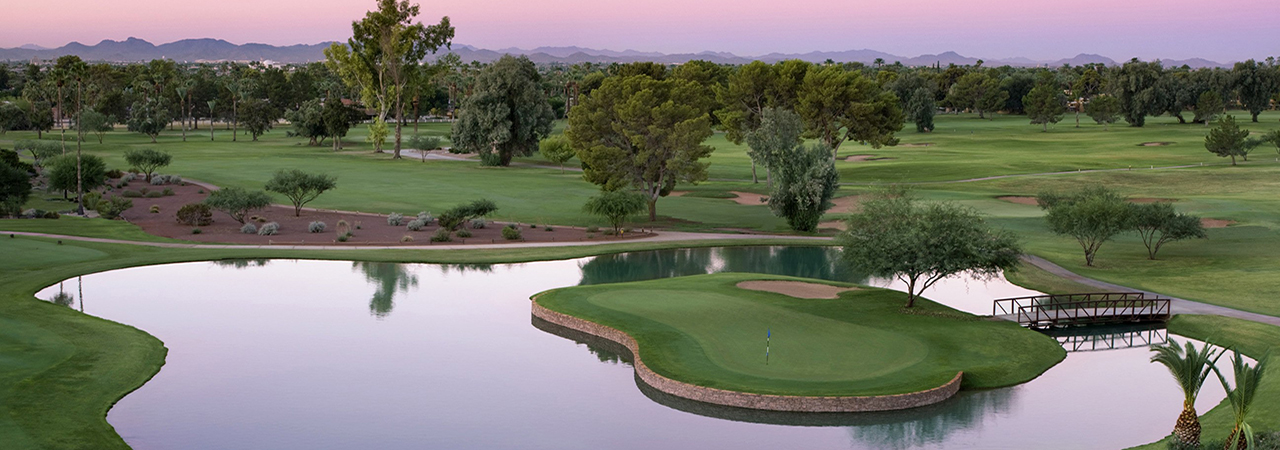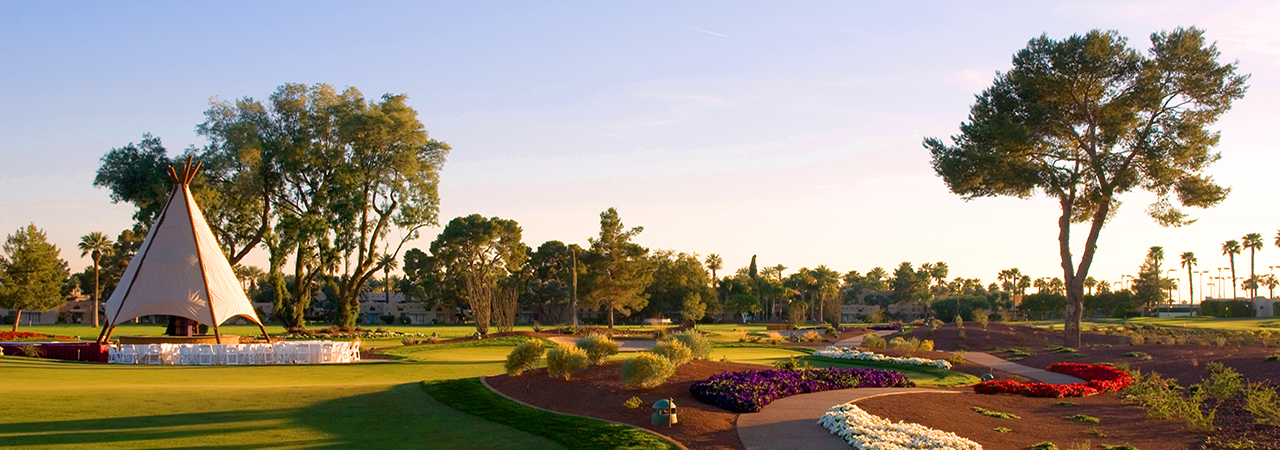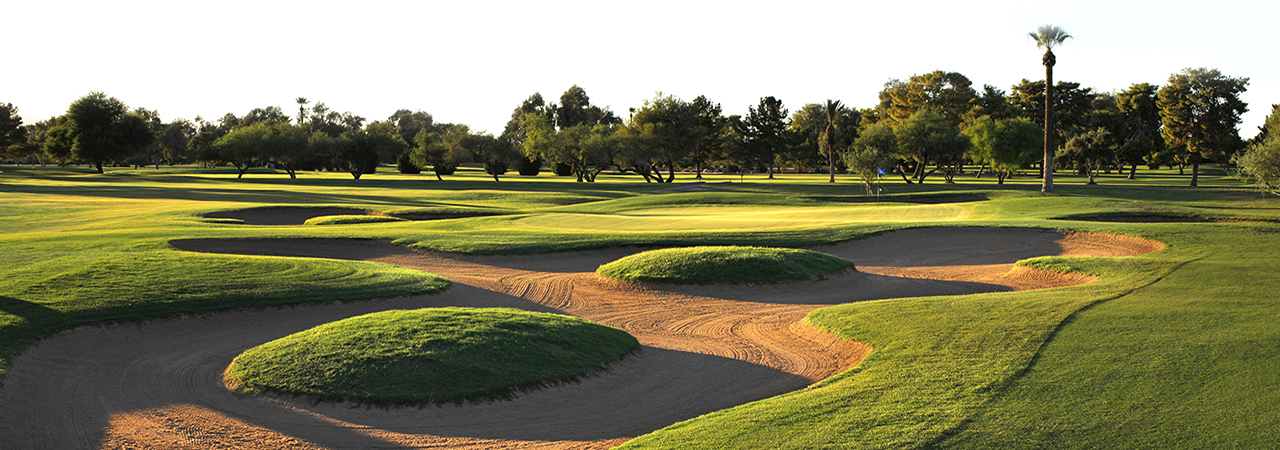Project Description
desert layouts and multi-million dollar projects, there are a few reminders
of the game our parents and grandparents played…One of the finest
among them is the Wigwam Resort’s Gold Course
Project Overview
Steeped in tradition, the Wigwam’s three 18-hole championship golf courses offer a diversity that cannot be matched by any other Arizona resort. Here, the golf enthusiast has their pick of not just one or two courses, but three 18-hole courses — 54 holes of championship golf including two courses designed by the legendary Robert Trent Jones, Sr. And, in true Wigwam style, each course — The Gold, The Blue and The Red — offers a unique challenge that adds spice and variety to one’s stay at this timeless and relaxing retreat.
We were asked to remodel the Gold and Blue Courses in 2004. The goal was to restore The Robert Trent Jones, Sr. attributes and bring the course back into favor among visitors to the Arizona desert. We had previously remodeled several holes of the Wigwam’s Red Course, an original design by Red Lawrence. Lawrence worked for William Flynn, golf architect of Shinnecock Hills, Cherry Hills and Merion.
Richardson attacked the Gold and Blue Course project by looking at revenue and opportunities lost on the constrained courses. For example, there were no decent practice facilities nor any decent area to host pre- or post-tournament activities. Richardson pushed the envelope. The eventual plan embodied a full range of practice and event venues, while preserving the legacy of Robert Trent Jones, Sr.
Golf at the Wigwam is a truly classic experience. This Arizona treasure was established in the 1920s, a time when golf courses did not get built through dense housing developments, and certainly not with tight, target fairways. In the 1960s Arthur Jack Snyder expanded the nine hole layout to 18-holes, ushering in a new era of “championship golf” at the Wigwam. Soon after, not wanting to be outdone by rival Firestone, the Wigwam’s owner, Goodyear Tire & Rubber, looked to Mr. Jones for advice. Jones’ opinion was to expand again, to 36-holes. Jones, a good friend of Snyder’s, integrated Jack’s routing to the new facility, preserving 16 of the Snyder holes within the routings for the two 18-hole courses. “Trent did very little except to remodel my greens,” remarked Jack Snyder before his passing in 2005. “He was gracious to say that my greens were as good as any he could produce, and worthy of the expanded course.”
At the Wigwam, the golf courses have remained at the top of the list. This jewel of the desert is among the Southwest’s last remaining golf resorts built for a pure golf experience. Canals, streams and lakes cascade through the journey. The shadows cast on greens and bunkers are from majestic parkland trees, not multi-story resort buildings.
The Wigwam philosophy speaks golf at every turn — after all, isn’t this the purpose of a golf resort? Golf is different here. One gets the feeling that this is what Arizona golf was meant to be.
The Gold Course — Arizona’s Monster
Certainly, the Wigwam was given new life by Robert Trent Jones, Sr., America’s most famous golf course architect. Jones created only four golf courses in Arizona. The Gold and Blue Courses are quintessential examples of his style of heroic shot-making and, as he put it so well, courses with “Easy bogies and hard pars.” As a historical note, golf architect Jay Morrish began his career working as a site foreman for Jones, overseeing the Wigwam’s transformation to 36-holes. He would tell Forrest Richardson more than 40 years later, “I barely knew what I was doing at the time, but Mr. Jones believed in me and I gave it everything.” Morrish and Richardson were friends, and both members of the American Society of Golf Course Architects (ASGCA).
At more than 7,600 yards and par-72, The Gold Course anchors the Wigwam golf trio. The waiting list for tee times speaks for itself. One cannot say they have “played golf at the Wigwam” until attempting to tame what has become affectionately called, “Arizona’s Monster.”
Jones created The Gold Course to rival the famous South Course at Firestone Country Club in Akron, Ohio. The Wigwam’s Gold, a long and winding layout, was his West Coast version of the relentless South Course at Firestone. Among the highlights are the 645-yard 4th Hole, a par-5 that requires strength and patience. The 8th is a long par-4 to a green perched above a ominous canal. But it is the finish — that stretch from the 16th home — that will test the nerves of any golfer. The 16th is a par-3 over water to a split-level green, the 17th is a par-4 to a narrow green across a pond, and the 18th is among the toughest finishing holes in all of Arizona. At the 18th the golfer faces a diagonal tee shot across water, followed by an approach to a green sitting right on the edge of a canal. Great golf holes allow the golfer to choose the degree of risk. It is no wonder that the 18th maintains a reputation of being brutal and unforgiving, for the golfer must make do or die decisions at every turn.
The Blue Course — A Tricky Challenge
Among Robert Trent Jones’ contributions to the world of golf was the concept of the “signature course.” His work at The Blue Course a testament to the ability of a great designer to create courses with such different character.
The Blue has been described as tricky and subtle. Playing to a length just over 6,000 yards, but a par of 70, the test can be a bit deceiving. Here is a creative course. One full of decisions and thought-provoking strategy. The hallmark of Mr. Jones’ design can be found in the array of deep and perilous bunkers, ponds and dog-leg fairways.
The Blue Course is a course full of contradictions. Take for example the opening holes — a par-5, par-3, par-5, par-3 and yet another par-5. It is a roller-coaster of golf holes, each one offering a different obstacle and challenge.
Perhaps most photographed is the Blue’s new 15th hole, a short 140-yard par-3 to an island green. More than one match will be won or lost at this “simple little hole.” Among the finishing holes is the 17th, a par-3 to a green built as a mirror image of the famous 16th at Augusta where Mr. Jones’ remodeling work has endured as one of the most famous holes in all of golf.
The Renovation — Remodeling
The vision for the Wigwam Resort & Spa is to never stay still. Since its historic beginning this one-of-a-kind resort and its grounds have undergone expansion, improvement and painstakingly careful renovation. Throughout each endeavor, the charm and peacefulness of our Authentic Arizona style has always been at the forefront.
For golfers this tradition continues. In 2005 The Gold Course was completely renovated by Forrest Richardson & Associates using historic aerial photography and original plans. The vision of Robert Trent Jones, Sr. was brought back by carefully returning bunkers and greens to the exact shapes and depths as originally built. In some areas length and features were added, but only with an eye toward the Jones’ style and philosophy.
At the Blue Course major remodeling has returned holes to their original look and has allowed for the creation of four new holes. Under the direction of golf course architect Forrest Richardson, The Blue Course remains a formidable challenge while sporting some new and exciting elements.
Practice. Practice. Practice.
Among the most exciting additions to the Wigwam has been the creation of a new state-of-the-art practice range and “The Village Green.” The new practice facility is among the largest in Arizona with two full-size tees, target greens and three separate greens for putting, chipping and pitching. The Wigwam Golf University occupies one end of the range. This 2,000 s.f. facility is home to a full golf school with a PGA instruction staff, video bays and strength training equipment.
The Village Green is a two acre putting green and garden which may be enjoyed by guests throughout the day and evenings. Rolling putting surfaces meander though giant saguaro cactus, flowers and Sonoran desert landscape. Sophisticated lighting and surround sound makes for a perfect setting to sip on a drink and take in the day or starlit night. It is the ultimate in putting greens. For anyone who’s been to the famous Himalayas putting green at St. Andrews, Scotland, the Wigwam’s new Village Green is best described as the American version — a special setting and a remarkable way to spend some time relaxing.
Quick Facts
Scope: Master Planning, Entitlement Process, Design, Approvals, Bidding, Construction Documents, Construction Management Services, Branding & Signage
Gold Course: 18-holes/Par-72/7,500-yards
Blue Course: 6 Remodeled Holes
Amenities: Range, Short Game Area, Village Green, Range, Teaching School, 3-Hole Kids Course
Budget: $6.5 million USD
Completion: Restoration Completed 2006
Address: 300 East Wigwam Boulevard, Litchfield Park, Arizona 85340
Articles
Forrest Richardson Named Renovation of the Year Winner (3-2-06)
Historic Wigwam To Be Restored (4-2-05)

